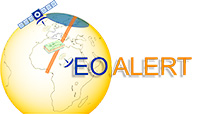Towards Very-Low Latency Storm Nowcasting through AI-Based On-Board Satellite Data Processing
Robert Hinz, Álvaro Morón, Juan Ignacio Bravo, Murray Kerr, Cecilia Marcos, Antonio Latorre and Francisco Membibre
DEIMOS Space S.L.U., 28760, Tres Cantos – Madrid, Spain
Agencia Estatal de Meteorología, Spain
Abstract
Satellite-based Earth Observation (EO) is a key technology for applications like emergency management, civilian security, environment and resource monitoring. Demands on amount, type and quality of remote-sensing satellite data and efficient methods for data analysis have increased sharply in recent years. However, the use of satellite-based image products for scenarios which require very low-latencies, such as rapid meteorological and civil security applications, is still limited by the bottleneck created by the classical EO data chain, which involves the acquisition, compression, and storage of sensor data on-board the satellite, and its transfer to ground for further processing. Onboard processing offers a promising solution to reduce the latencies between data acquisition and product delivery to the end user. The H2020 EU project EO-ALERT (http://eo-alert-h2020.eu) implements this approach through the development of a next-generation EO data processing chain that moves optimised key elements from the ground segment to onboard the satellite. In this article, the feasibility of the concept is demonstrated using EO-ALERT’s extreme weather nowcasting product as an example. The system is able to detect and track convective storm and Overshooting Tops, and to send the processed information to ground, within 5 minutes of the observation.
© 2021 EO-ALERT All Rights Reserved

